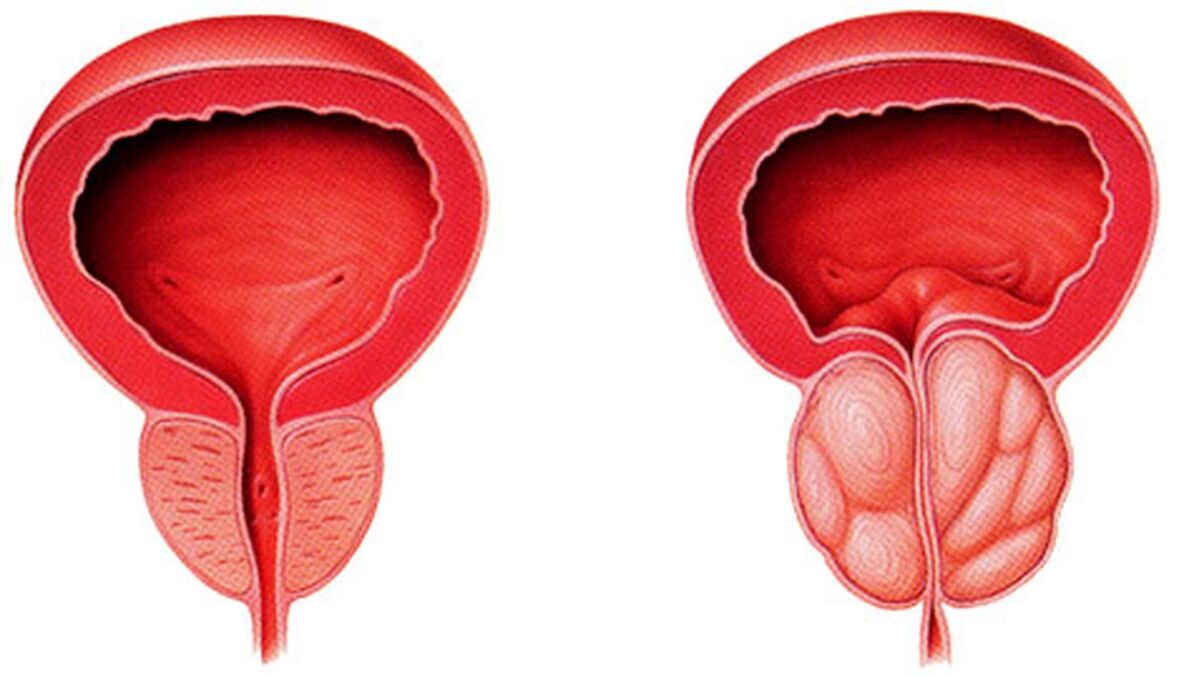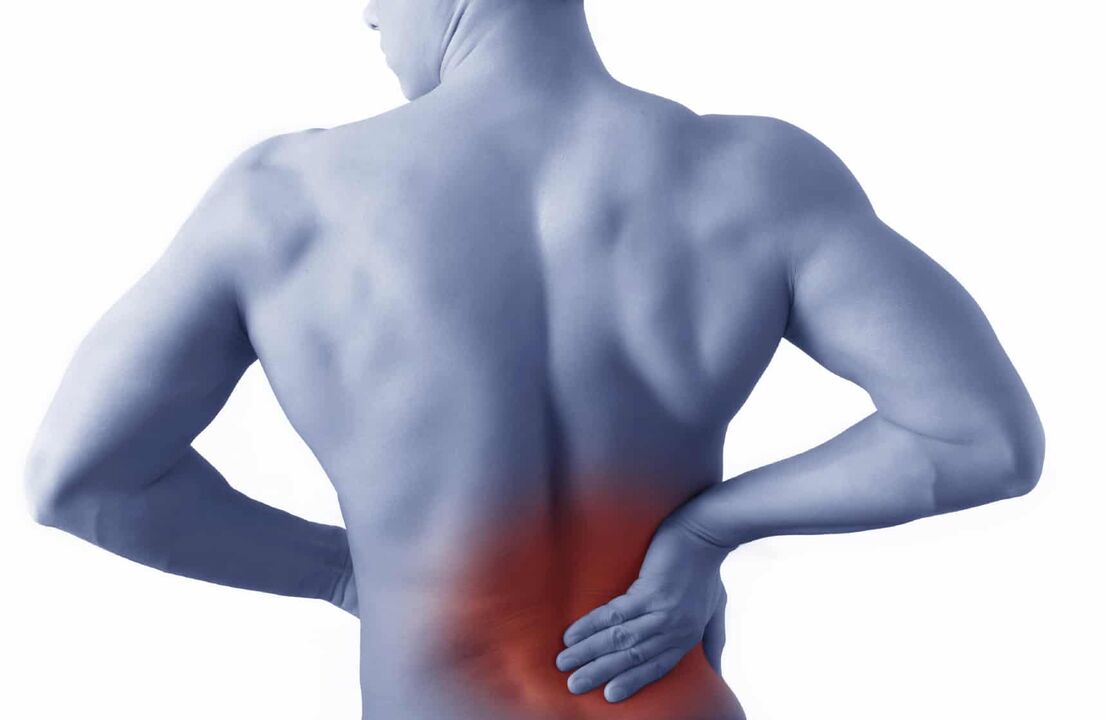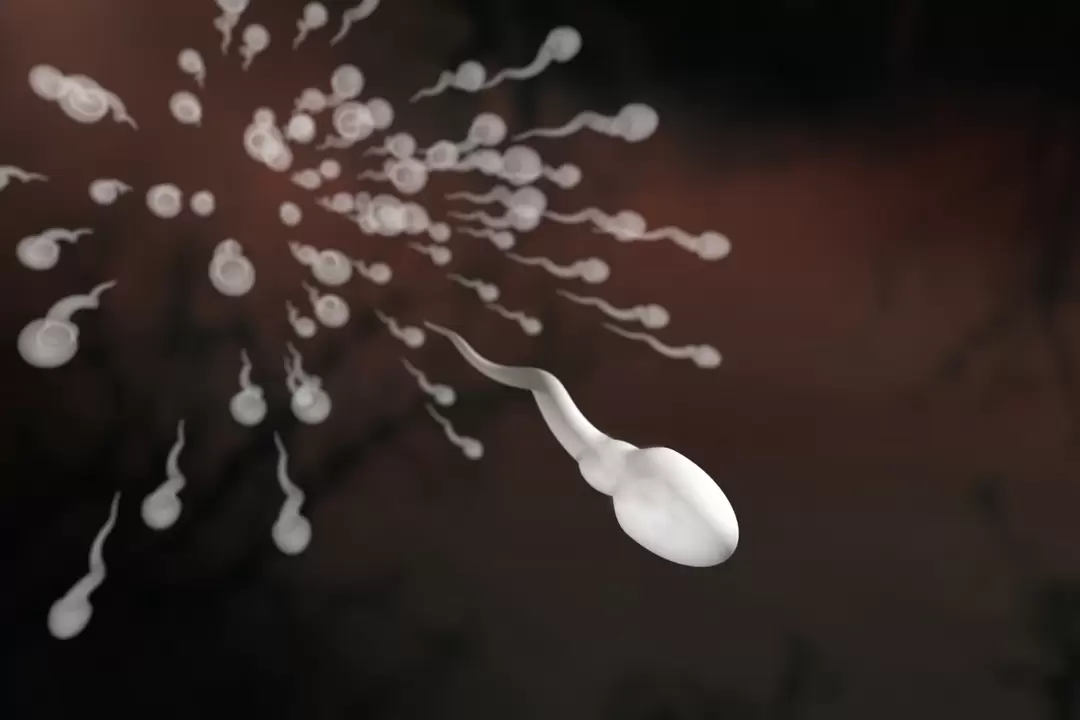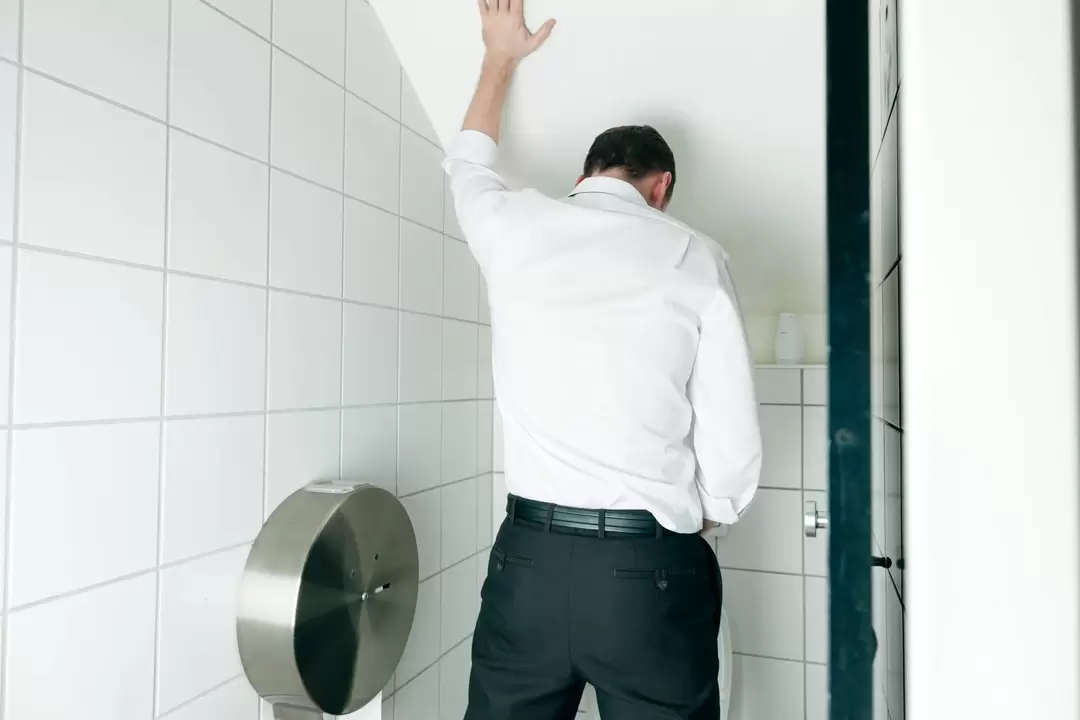The prevalence of prostatitis among men is quite high, which is associated with an inactive lifestyle, unhealthy diet, a large number of dangers found in the life of modern people. According to the doctor, the treatment of the disease should be started as early as possible. To do this, every representative of the stronger sex should know what the first signs of prostatitis in men are. About what symptoms accompany various forms of the disease, what the exacerbation looks like, acute and chronic processes, and a little about treatment, will be discussed in the article.

General information
Signs and symptoms of prostatitis, as well as its treatment, are quite diverse, which are associated with the presence of several types of diseases. First of all, prostatitis in men is:
- spicyOften has a purulent character. Signs of inflammation in men, both general and specific, are maximally expressed, and the causative agent is pathogenic (pathogenic) flora. Therefore, the treatment of men in most situations is to prescribe antibiotics.
- Chronicle. It can be the result of an acute process if the treatment of a man is done incorrectly or out of time. The bright symptoms that accompany the purulent process disappear, the symptoms are more or less clear. In remission, the characteristic signs of the process may disappear completely. With exacerbation of chronic prostatitis, symptoms increase, but more often with less intensity than with acute inflammation.
Chronic prostatitis in men can initially develop without signs of previous acute inflammation. In this case, prostatitis often has a stagnant character, that is, arising from the inactive lifestyle of a man, the presence of chronic diseases that affect the rate of blood circulation in the pelvic organs.
It is very important to know and be able to understand the first signs and symptoms of prostatitis, because this will affect the treatment of the disease that will be needed in the future. If in the case of bacterial prostatitis, which will be more indicated by general toxic symptoms, the treatment must necessarily include antibiotic therapy (regardless of whether it will be tablets or injections of antibacterial drugs), then in the case of the stagnant process, the treatment of the stagnant phenomenon comes first, that is, lifestyle modificationand treatment of comorbidities.
Enlarged photo with prostate prostatitis:

- Violation of urinary function. In another way, this group of symptoms is called "disordered disorder. "This should also include symptoms that indicate the development of the inflammatory process in the prostate.
- Sexual disorders specific to prostatitis.
- Changes in the nervous system are caused by primary processes. disease characteristics.
More details about each group of signs of prostatitis will be discussed below.
certain expressions
The main and often the first sign of prostate inflammation is pain. Pain can be of a different nature. The nature of the pain can vary significantly. There is a stab, pain, pain cut feature localization. If these are acute processes, then they can significantly affect men's lives, leading to sleep and performance disturbances. In chronic prostatitis during the period of remission, symptoms are mild, if not completely absent.
The typical localization of pain in prostatitis is the pelvic region. A man can feel pain in the perineum, lower abdomen, lower back. Most often they give to the penis, scrotum, testicles. Pain can accompany urination and defecation, and also increase during erection and ejaculation. The first characteristic sign of calculus prostatitis may be pain, the intensity and time of occurrence of which depends on movement. They appear or intensify if a man walks quickly, jumps, bends. The same symptoms are caused by mechanical irritation of the channel wall with stones.

No less common signs of prostatitis are various violations of the urinary process. Dysuria is indicated by the need to urinate frequently, a feeling of incomplete emptying of the bladder, a false urge to urinate. The nature of urination may also change: a man complains of a slow or intermittent flow of urine, the need to make an effort to urinate normally. A terrible sign of prostatitis, although not the first, is acute urinary retention. These symptoms develop with acute inflammation, accompanied by severe swelling of the prostate gland.
Urinary retention occurs when prostatitis is combined with adenoma. In the case of exacerbation of chronic prostatitis in a man, an acute condition may also occur, but urinary retention is less intense and the condition is less common. Often, a man cannot hold a large amount of urine, and there is a need for frequent visits to the toilet.
Dysuria and pain are the most common first signs of any form of prostatitis. They are most often the first and are used in the clinic for acute or exacerbation of chronic prostatitis.
Unpleasant for most men, although rarely the first sign of prostatitis is sexual dysfunction. Disturbance of the intimate sphere is more often a manifestation of a chronic inflammatory process and has a different nature, therefore, the treatment approach is also different. First of all, there are problems with erection. He may become lethargic, or the man may not be able to fully complete sexual intercourse. Interrupted ejaculation: premature is more common. Over time, the sharpness of the usual sensation is extinguished. A problem from purely physiological to psychological. Disorders of sexual desire (libido disorder) develop, problems with orgasm arise. These symptoms have a negative effect on the general condition of the nervous system, causing a decrease in mood, depression, and sleep disorders. A man no longer feels his own usefulness.
Constantly being under pressure and stressed about one's own situation can trigger aggressive behavior, irritability, and a tendency to conflict in some men. In such clinical conditions, sometimes the treatment of prostatitis alone does not lead to the normalization of the mental sphere. A representative of the stronger sex may need an experienced psychologist and also pills from the antidepressant group, which should be taken even after the treatment of the underlying disease ends.
Along with the disturbance of the sexual sphere, there are changes in the sperm. For example, purulent prostatitis will be accompanied by a change in color, smell of seminal fluid. Depending on the pathogen causing the process, the biological fluid can be yellow, green, yellow-green. Sometimes there is a discharge from the opening of the urethra and outside of sexual intercourse. They also differ in color, smell and other characteristics, although mucus, transparent discharge that appears in the morning is more common. A man himself can detect pathological impurities in the urine after urination. We are talking about the appearance of mucus threads, also more often in the morning part of the urine. Various pathological impurities in some situations remain the first and only manifestation of the inflammatory process.

The only sign of chronic moist prostatitis may be infertility. Often, already during the examination of a man about the inability to conceive a child, a representative of the stronger sex reveals an old inflammatory process that leads to a disturbance in the process of normal sperm formation. During the examination, a decrease in full spermatozoa was found in men, as well as a decrease in the mobility of male germ cells.
Impurities in the semen can be bloody, which is a sign of calculus prostatitis. This condition is called erythrospermia. There are symptoms due to wall trauma by stones and are temporary. Since the first sign of prostatitis is rare, therefore, when a mixture of blood in the semen appears, all other diseases that cause similar symptoms should always be excluded.
General manifestation
General signs of prostatitis often mean a general inflammatory reaction, indicating the development of an acute inflammatory process in the body. Naturally, in chronic prostatitis, these manifestations are not expressed, only if we are not talking about a clear aggravation. Signs of an active inflammatory process are:
- Increased body temperature. The degree of increase correlates with inflammatory activity. In acute bacterial prostatitis, especially accompanied by abscess formation, the temperature can reach 39-40 degrees. This condition is accompanied by other symptoms of the disease. Temperature can also be the first sign of viral prostatitis.
- General weakness, headache.
- shivering. Shivering is characteristic of bacterial prostatitis.
- Muscle pain.

General signs of inflammation are rarely the only signs of prostatitis, but there are exceptions. A slow chronic form of the disease with a low severity of certain symptoms sometimes leads to a long search for the cause of the subfebrile state (temperature rise to 37. 2-37. 3 degrees), which is actually prostatitis. The diagnosis of the disease in such a situation is established after an additional examination and study, including seeding the secretion of the prostate for the presence of pathogenic microorganisms in it.
Clinical dependence on the stage and type of disease
It was said above about the dependence of the clinical picture on the type of prostatitis and the stage of the course of the disease. Let's touch on each of them in more detail.
The first stage of the process is characterized by the dominance of general symptoms of inflammation over changes in the sexual sphere. The main symptoms of this disease will be pain, intoxication, urinary disturbances (especially cramps, pain during urination). Some representatives of the stronger sex see changes in sperm and urine, as well as discharge from the penis. If at this stage the man does not receive adequate treatment, the symptoms will disappear, and prostatitis moves to the next stage.
The inflammatory process without proper treatment rarely ends with full recovery of the organ. Basically, the result of this disease will be the formation of fibrous or connective tissue that replaces the normal tissue of the prostate gland. For a significant improvement in the general condition, a man may not realize the severity of the disorder. A person has the need to go to the toilet more often "in a small way", sexual changes gradually increase, but the symptoms are not clear.

If there is no proper attention to the manifestations and signs of the remaining inflammatory process, prostatitis moves to the next stage. In fact, this is a chronic process, the clinic is characterized by the process of alternating remission and exacerbation. Early signs of chronicity may not be present, because the disease does not always run actively. However, progression leads to the formation of rough fibrous scars in the prostate tissue, which will cause the main symptoms of the condition.
In the first place among the symptoms is the symptom of dysuric, manifested in the form of a wet stream of urine, the need to urinate frequently, the feeling of incomplete emptying of the bladder. Disorders of the sexual sphere are combined: problems with erection, premature ejaculation, impossibility of sexual intercourse completely.
Some forms of prostatitis also have their own characteristics of the course. About the acute and chronic stage of the bacterial process has been said. What are the signs of congestive prostatitis, will be listed below:
- Prolonged pain syndrome (up to 3-6 months) with low intensity. Pain is limited.
- Inflammatory changes in prostate secretion and urine are absent.
- When interviewing a man, it may turn out that he has factors that affect the development of blood stasis in the small pelvis.
- In the clinical picture, as the first symptom of the disease, violations of the sexual sphere and dysuric phenomena are revealed.
Asymptomatic prostatitis also has characteristics. Naturally, the process has no clinical picture. The disease is suspected after the detection of changes in the general analysis of urine. After the examination, it is possible to make an accurate diagnosis and prescribe treatment.
Whatever form of prostatitis in a man is revealed, the process at any stage can lead to the development of formidable complications. They can be an inflammatory process of any organ of the urinary system (kidneys, bladder), which in turn will lead to the appearance of urolithiasis or even to the development of chronic kidney failure. Therefore, to avoid formidable complications, it is necessary to treat prostatitis in time, and for timely treatment, of course, you need to be able to recognize the first signs of the disease and contact a specialist in time.





























